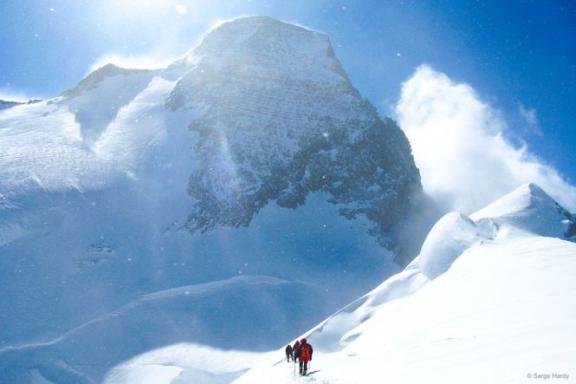In the 60s, the USSR was at the height of its glory. But borders were hermetic, and Soviet mountaineers expressed their (immense) talent on the many peaks that stretched from one end of the former Empire of the Tsars to the other. The Himalayas are off-limits to them. On October 12, 1967, to encourage and reward the best in the race to the top, the Bureau of the Central Council of Sports Societies and Organizations of the USSR decided to award a prize to those who managed to climb the five highest Soviet peaks. The reward: to become a “Snow Leopard”, the almost mythical animal that haunts the mountains of Central Asia. Many will be lining up to win this prestigious “Snow Leopard” medal. In 2011, Serge Hardy will be the fifth and last Frenchman to win the title. Who's next?
Join the Snow Leopard challenge.
Five mythical peaks, all in the former USSR
The five peaks of the Snow Leopard Challenge, in ascending order of difficulty:
- Ibn Sina Peak (ex-Lenin Peak) - 7,134 meters on the Tajikistan/Kyrgyzstan border
- Ozodi Peak (ex-Korjenevskaya) - 7,105 meters in Tajikistan
- Khan Tengri peak - 7,010 meters on the Kyrgyzstan/Kazakhstan border (the geological altitude is 6,995 meters, but due to its thick shell of ice at the summit, the official altitude is 7,010 meters)
- Pic Ismail Somoni (former Communist peak) - 7,495 meters in Tajikistan
- Pic Jengish Chokosu (ex-Pic de la Victoire, ex-Pic Pobeda) - 7,439 meters in Kyrgyzstan
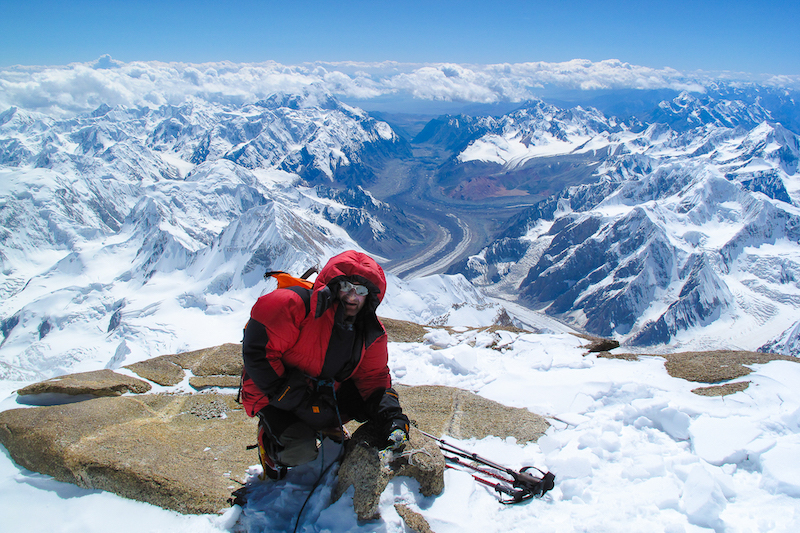
Pobeda summit © Serge Hardy
Expeditions Unlimited embarks on the “Snow Leopard” challenge with Serge Bazin
Well-known to French-speaking mountaineers, Serge Bazin is an expedition leader at 8,000 meters. He has been guiding participants on high-altitude summits for many years. We've built up a strong relationship with him. He advised us on our first expedition to Manaslu (8,163 m), and in April 2024 we'll be heading for Makalu (8,481 m).
In 2022, for the second year running, he successfully guided our participants to Peak Lenin at 7,134 meters.
Expeditions Unlimited is committed to the “Snow Leopard” challenge with Serge Bazin for summer ascents over the next five years. Ideally, we'd like to be able to form a tight-knit core group on these four climbs, the next three of which are massive, either technically challenging, with Khan Tengri via the North Ridge, chosen as less exposed to objective hazards, in terms of commitment at very high altitude, with Pic du Communisme and its kolossal plateau at 7,000 meters and finally, in terms of objective hazards, with the famous Pic de la Victoire or Pobdeda.
1. Ascent of Peak Lenin or Ibn Sina to 7,134 meters in 2023
Peak Lenin is considered the world's most accessible 7,000m, sometimes casually and therefore wrongly. Our success rate is quite high, around 70%. We allow 4 to 6 days more than most operators, which gives the expedition greater serenity, more acclimatization time to enable as many people as possible to reach the summit, and of course, greater weather safety. We set off guided by Serge Bazin, an experienced French mountain guide, assisted by a local mountain guide for the summit push. We follow the normal, physically demanding route to the summit. Over the past five years, interrupted by the pandemic, we have reached the summit in 2018, 2021 and 2022.
Climb Lenin Peak at 7,154 meters in Kyrgyzstan.
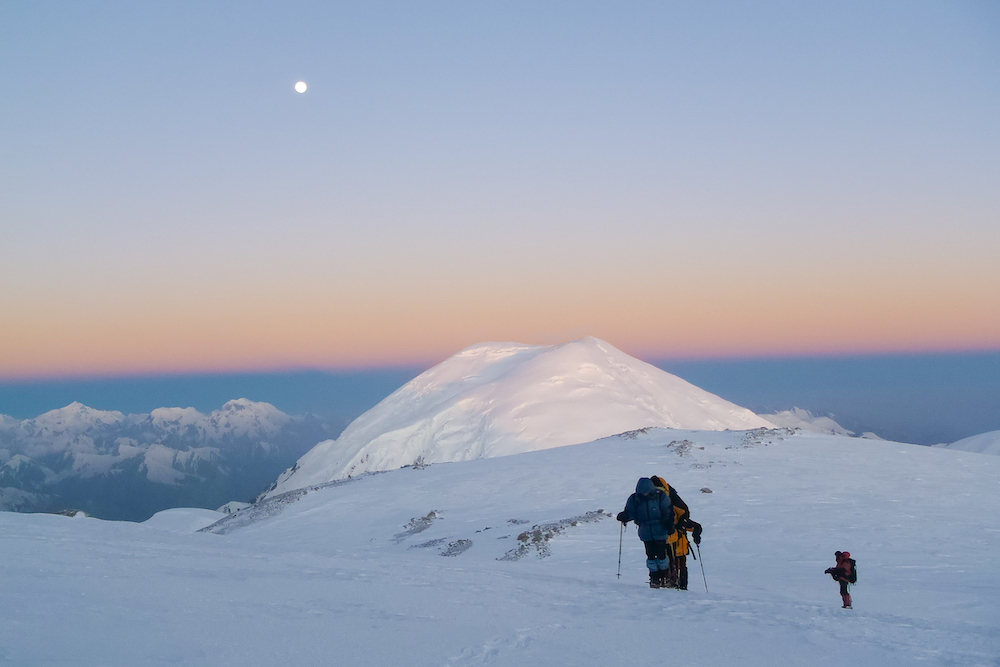
To the summit © Serge Bazin
2. Ascent of Korjenevskaya or Ozodi peak to 7,105 meters in 2023
The ascent of Korjenevskaya Peak (Ozodi Peak since 2020) is slightly more difficult than that of Lenin Peak. It takes place in a grandiose setting, in the heart of the Pamir Mountains, in the Academy of Sciences range. Located just a short distance from Ismail Somoni Peak (ex-Communism Peak), the highest peak in the former USSR at 7,495 meters, Korjenevskaya is a remarkable objective. Before embarking on its slopes, we climb Vorobiova Peak (5,691 m), a lookout point directly opposite Communism Peak. A magnificent and rare expedition that we are confirming for the summer of 2023, a prelude to other great adventures, guided by Serge Bazin with whom we are beginning a five-year cycle around the Snow Leopard challenge, the ascent of the five highest peaks in the former Soviet Union, all located between Tajikistan and Kyrgyzstan.
Climb Korzhenevskoi Peak at 7,105 meters in Tajikistan.
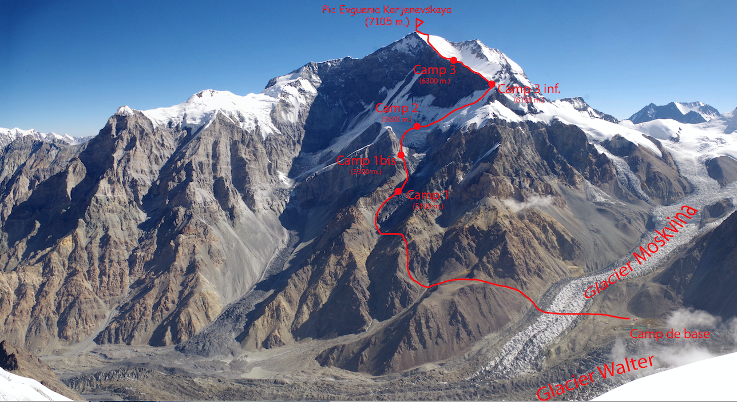
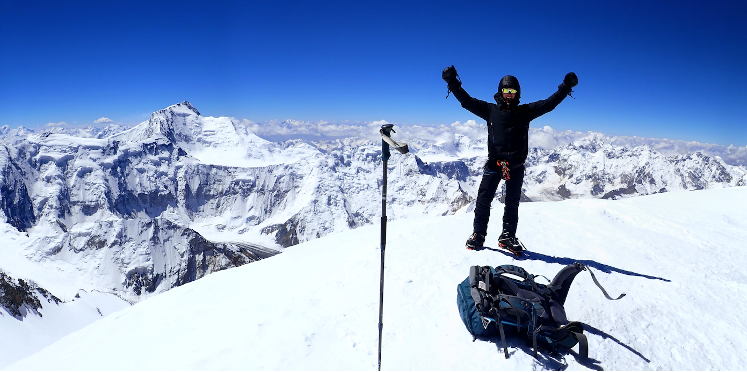
Korjenevskaya summit
3. Climbing Khan Tengri peak to 7,010 meters in 2024
At just 7,010 meters above sea level, Khan Tengri could be the easiest of the Snow Leopard Challenge. But its modest altitude is more than made up for by the sheer number of difficulties involved in its ascent. The “Little K2”, as it is nicknamed by mountaineers who know the mountain well. The most northerly of all the 7,000-meter peaks on the planet, it was first climbed in 1931 by a Ukrainian mountaineer: Michael Pogrebetskiy. One of the main challenges at the time was to climb up the immense Inyltchek glacier (60 kilometers long), which defended access to the highest mountains in the Tien Shan. The “normal route” follows the southern slope to the west saddle (5,900 m), the lowest point between the Khan Tengri and its close neighbor, the Chapaev (6,126 m). It then climbs the long west ridge, composed mainly of marble. But the vast glacier on the south face is a real avalanche trap. The northern side, steeper but much less exposed to objective risks, is a long and safe route. It requires us to climb to the summit of Chapaev, before descending to the west saddle, where we return to the normal route. Today, access to the base camp is greatly facilitated by helicopter flights. The major obstacle remains the weather. The proximity of Siberia on one side and the Taklamakan desert on the other generates violent, cold winds. It is essential to have equipment worthy of an ascent to over 8,000 meters.
Climb Khan Tengri at 7010 meters in Kyrgyzstan.
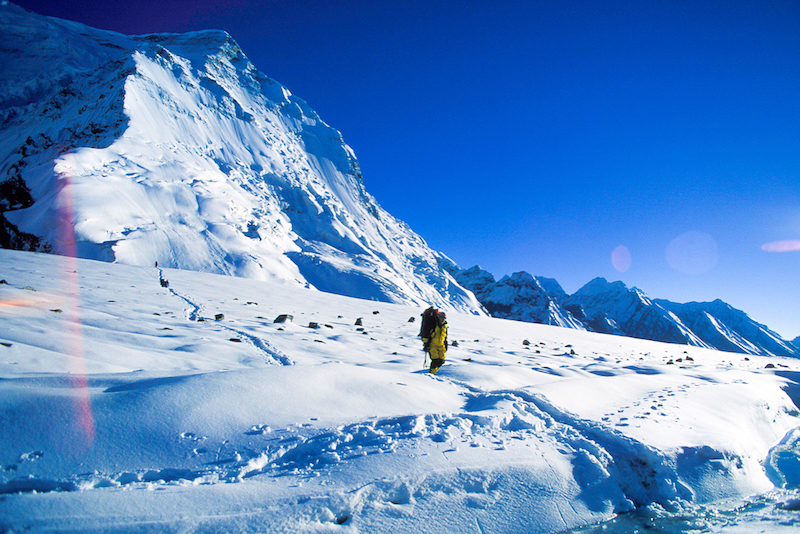
Departure from base camp © Jean-Marc Porte
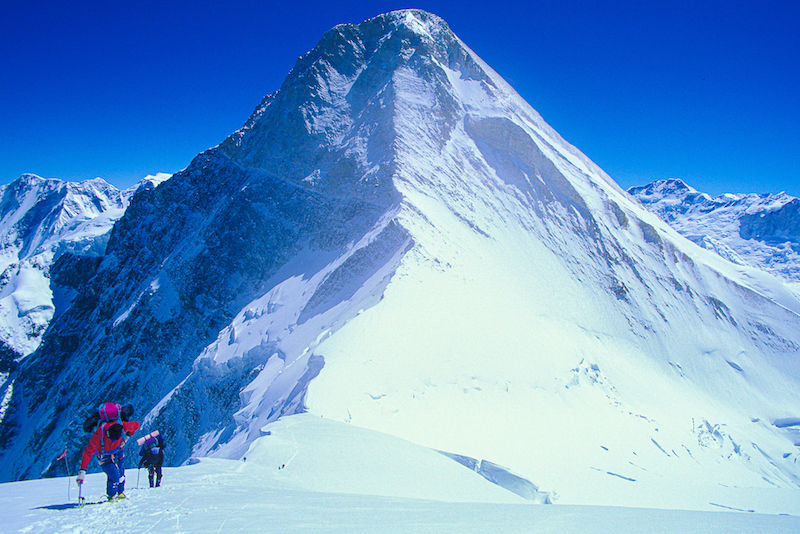
Climb back to camp 3 © Jean Marc Porte
4. Ascent of Communism Peak or Ismail Somoni to 7,495 meters in 2025
At 7,495 meters, with its northern geographic position and, above all, its endless plateau at over 7,000 meters, Ismail Somoni Peak, better known under its former name of Pic du Communisme, is, along with Pobeda, the “big one” of the Snow Leopard Challenge. Reserved for those who already have a strong experience of high altitude. The route followed is that of the classic Borodkin Spur on the north side of the mountain, first climbed in 1968. The route of the first ascent, made by Yevgeny Abalkoff in 1933 on the east face, is too committed and difficult for a “normal route” on a major summit.
Four or even five altitude camps are required to complete this long ascent. The main difficulty lies in the crossing of the immense Pamirskoe Plateau and, on the return journey, the 150-meter climb back up to the summit of the Borodkin Spur. In the event of bad weather on this part of the route, the commitment is very high.
For those interested in the history of mountaineering, Communism Peak was first climbed in 1933 by one of the two famous Abalakov brothers, Yevgeny. The extremely long route he then followed is rarely climbed again, the “normal route” now being via the Borodkin Spur.
Climb Ismoil Somoni Peak at 7,495 meters in Tajikistan.
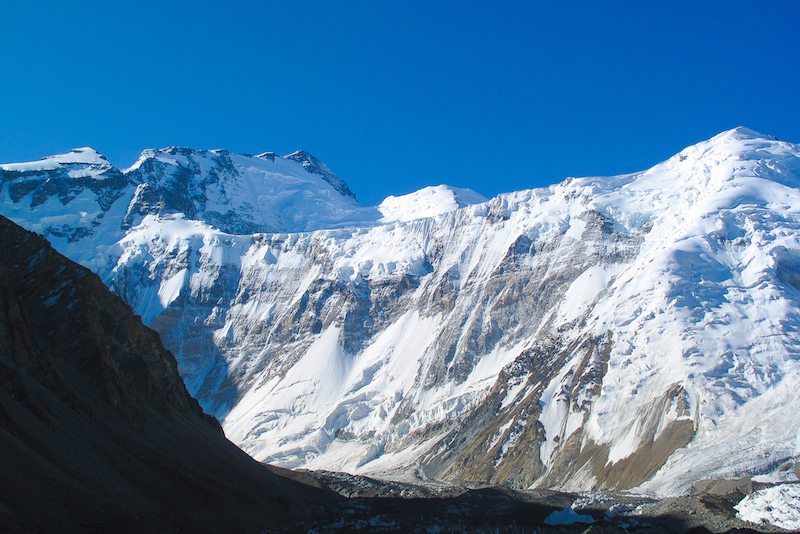
Communism Peak, Borodkin Spur © Serge Hardy
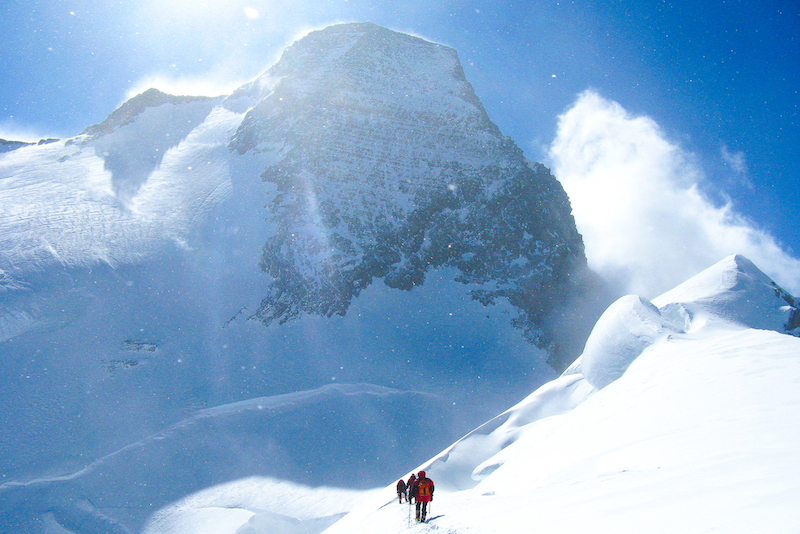
Pic du communisme - The great plateau below Dushambe Peak © Serge Hardy
5. Ascent of Pobeda peak / Victory Peak / Jengish Chokosu to 7,439 meters in 2026
It wasn't until 1943 that Pobeda Peak was identified as the highest peak in the Tien Shan or Celestial Mountains. Its close neighbor, Khan Tengri, had long seemed to occupy first place. Far away in the heart of the Tien Shan range, it wasn't until 1956 that Pobeda was climbed by the famous Russian mountaineer Vitali Abalakov, who gave it the pompous name of Victory Peak (Pobeda) in homage to the Red Army. This name was retained at the end of the Soviet era, but in Kyrgyz “Jengish Chokosu”.
The intrinsic difficulties of the ascent are hardly greater than those encountered when climbing Peak Lenin. It's the distances to be covered and the number of hours spent at over 7,000 meters that make the ascent challenging. To reach the advanced base camp (or camp 1), you have to progress almost fifteen kilometers on glacier. As you approach Camp 1, avalanches from the west face put the pressure on. Once on the west ridge, we are forced to spend many hours above 7,000 meters, from camp 5 to camp 6, and then on to the summit. Not to mention the return journey, which takes almost as long. All these difficulties make Pobeda a major objective.
Climb Victory Peak at 7,439 meters in Kyrgyzstan.
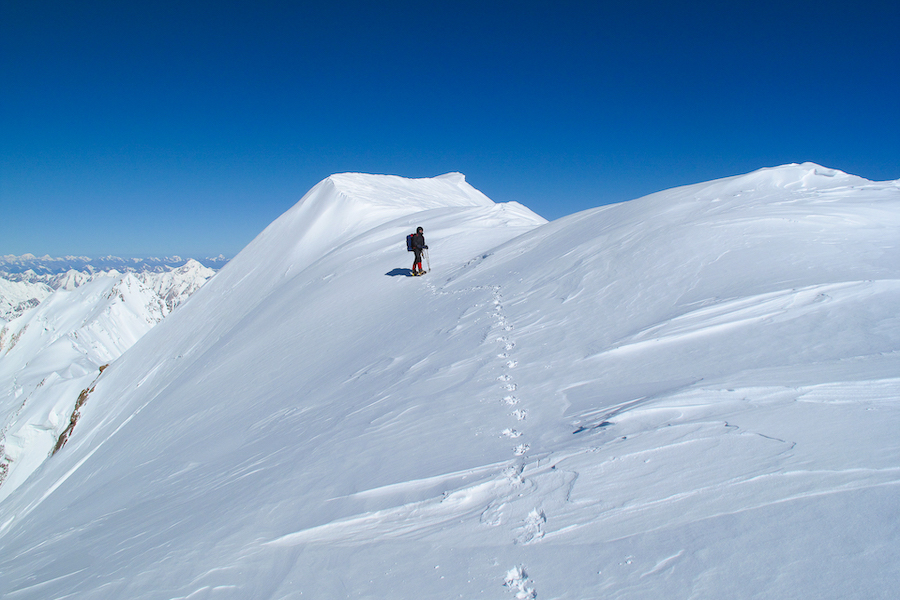
Pic Pobeda - summit edge © Serge Hardy
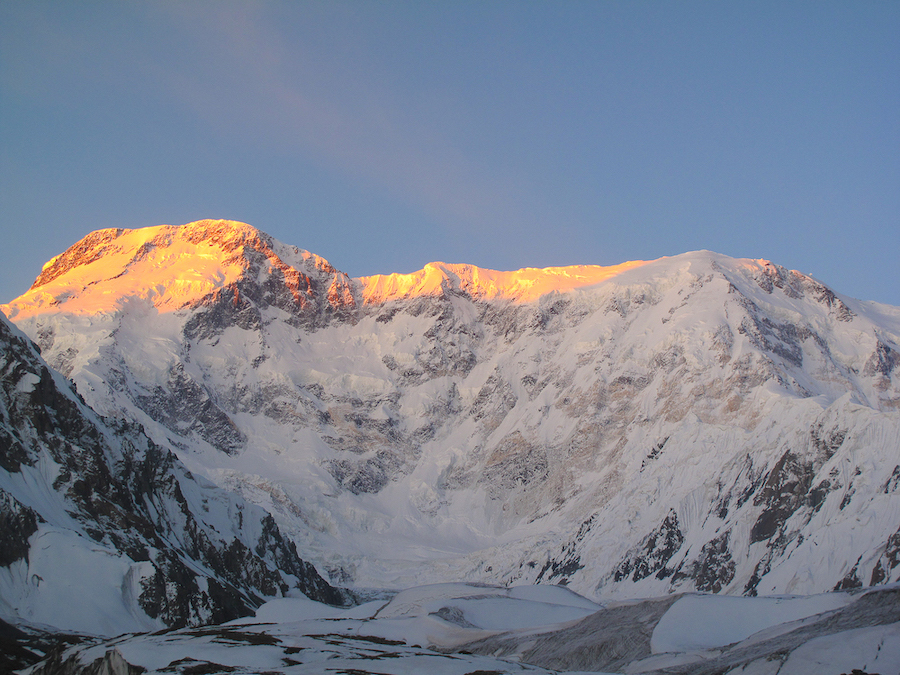
Pobeda north face © Serge Hardy
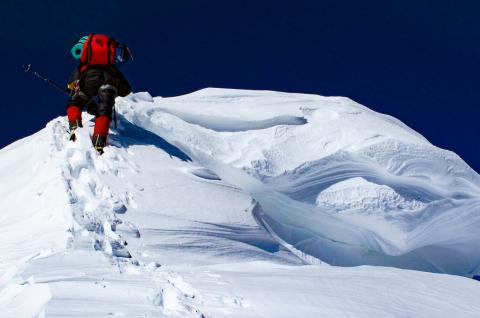
Climb Victory Peak at 7439 meters in Kyrgyzstan

Climb Korzhenevskoi Peak at 7105 meters in Tajikistan
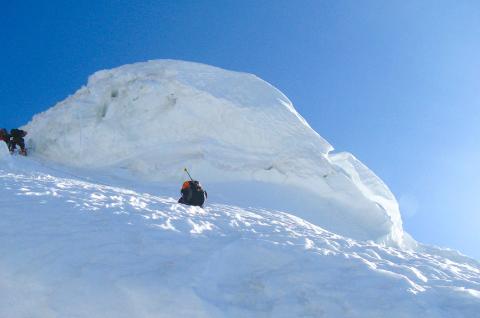

 Expeditions Unlimited blog
Expeditions Unlimited blog